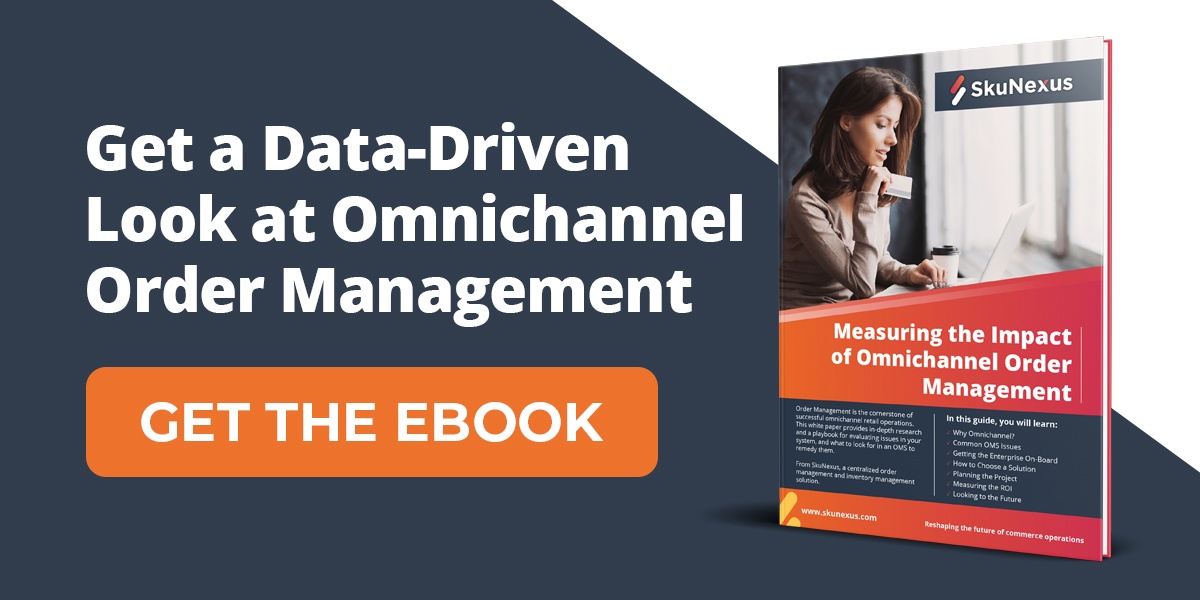There are hundreds of different solutions available to manage your inventory. Each of them has something special - but a lot of them cover the same features and functions.
You’re likely already using something to manage your inventory - but when you’re looking to upgrade, how do you sort through all the noise to find what’s right for your business?
These are the main factors to consider when you’re evaluating inventory management software.
Problems That Inventory Management Software Solves
There are many reasons why an inventory management system would be top of mind for your business - almost all of them will be centered around inventory or operations.
- Running out of stock
- Too much in stock
- Too much time spent tracking or managing inventory
- Inefficient inventory operations
- Not sure how much of what you have
- ...or where it is
- A conspicuous gut feeling
That’s not an exhaustive list by any means, but keep in mind that when tracking your inventory, it’s better to have it and not need it than need it and not have it.
Particularly when the holidays approach - a few mistakes during that time of year can have consequences that last for the entire year.
Benchmarks
Most likely you’ve been benchmarking your inventory, order, and fulfillment operations KPIs. That’s the best place to start, because if you can’t measure it, you can’t improve it.
But you might be hitting a brick wall while trying to improve the inventory KPIs that you’ve been tracking. If you’ve tried everything, but aren’t seeing any measurable difference, a more advanced inventory management system might be able to fill in the gaps.
Manual Attention
Even while using an inventory or order management system, there might be parts of your fulfillment or inventory processes that are manual.
You might not even realize that you’re doing it manually, since your current system might not have the features, functionality, or integrations to get it done without as much human input.
A good example is reordering products once stock levels have reached a certain point. This process can and should be automated - many inventory management systems can create and send purchase orders automatically.
 Key Features of Inventory Management Software
Key Features of Inventory Management Software
So what else can a good inventory management software do? What’s the best way to compare the products of multiple vendors?
Understand your needs (based on your current problems or aspirations), and then find the software that fits you best.
Sounds easy, right?
Forecast Sales and Inventory Needs
This is a key feature of inventory control systems, and you should expect the system you choose to have it.
By looking at your historical sales and inventory data, the system should be able to predict your sales and inventory needs in the future.
And more importantly, you should be able to influence those forecasts. For instance, sales generally vary month by month, and many businesses have higher sales and order volumes during the holidays.
Makes sense to you and me, but if the system doesn’t recognize that it should be looking at last year’s data instead of last month’s, then it may feed you inaccurate data, and leave you high and dry come Black Friday.
Consider how much influence you have over forecasting when deciding on the right system for your business.
Manage Inventory (duh)
This section won’t be long, because I hope you know that you need to be able to do this in an inventory management software.
You should be able to track prices, add images, tag locations (both physical locations such as warehouses or retail stores, and relative locations such as bins, aisles, shelves, etc), sizes, variants, and other key attributes.
This is the crux of the system - basic systems will do this, but not much else. More robust systems will add incredible functionality on top of this for maximum value.
Track Orders
Tracking of orders across the fulfillment lifecycle is a great feature to have within your inventory system, but not every solution will have it.
If it doesn’t - don’t fret - integrate with another system that manages fulfillment, warehouses, or orders. It’ll be able to track everything and pass the information back to your central hub.
Retail Connections
Enabling in-store fulfillment is a big step for many retailers. A good inventory system allows you to do this in a way that’s easy for the customer to understand and use.
If you have retail locations, this is a no-brainer. In-store fulfillment has been proven to increase average sale price and other favorable metrics.
Accounting Integration
Tied closely to inventory and sales is the need to manage accounting.
While this is a feature few inventory management softwares will have, they will almost all have the ability to integrate with an accounting system or ERP that can manage this core business function.
Unless you’re still using Excel to do accounting, you’ll need this functionality.
Barcode or RFID scanning
Having the ability to scan inventory as it moves from one stage to the next is a key part of operating a warehouse and fulfilling your own orders.
Many inventory systems will let you do this natively, and some will connect with other systems that focus on this specifically.
Either way, larger operations need this functionality to track large amounts of inventory across multiple locations and with dozens of employees working.
Integrations
It’s impossible these days for a business to use just one piece of software. It’s just not feasible.
That’s why every software platform you look at has an integrations page. They need to be able to pass important data from point A to point B - since there isn’t one tool that can do everything a business needs.
When evaluating software to manage your inventory, make sure the core pieces of your technology stack are able to be integrated. If they aren’t, figure out how much it will cost to create a custom integration, or ask about potential plans vendors may have to create it on their own.
Automation
By combining different parts of the tool, some tasks can be automated. The extent of this is usually governed by the features in the system, and the integrations with other systems. There are many things you can automate, and we’ve mentioned some of them here.
Each of these automations can increase the efficiency of your operations if done correctly. A word of warning: don’t over-automate. Automation is the last tool from your toolbox that you should use - since understanding a problem and the desired solution needs to be the top priority.
How Much Inventory Management Software Costs
You can expect to pay between $100 and $2000 for a good inventory management system. Crazy range of prices? You bet.
You might be able to get away with a $100 system at first, but when you have multiple locations, warehouses, sales channels, and employees you’ll need a more robust system. Then if you’re looking to improve operations significantly, you’ll need something even better.
Things such as number of locations or users, additional features, levels of plans, and other variable factors can drive prices up or down, so keep that in mind when evaluating software for inventory control.
Use It or Lose It
You can have the greatest tools in the world, but if you don’t use them, they aren’t worth anything. There’s a few components to this, starting with the one closest to users:
Ease of Use
Enjoying using a software is an important part of ensuring that it is used. When evaluating solutions, be sure to test drive them on your own if possible. The last thing you want is to hate using it every day, or for your team to dislike performing tasks within it.
If this happens, the chances of it being used by everyone in the same fashion are much, much lower - even if it is the perfect solution for your challenges.
Followed by All
This goes for usage of the system, and processes as well. Since every system will vary slightly, the way you get tasks done may vary as well. Make sure your team understands the details of what they should be doing, and that everyone is accomplishing their tasks the same way. If this doesn’t happen, it can lead to tiny errors that add up quite a bit over time.
Finding the right inventory management software for your business isn’t easy. If it was - I wouldn’t have written this article.
Comment below if you have tips for other readers on how they can choose the right inventory system for their business, and be sure to check out our guide to Data-Driven Omnichannel, which covers everything that happens after the sale in an omnichannel world.





